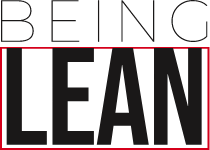
What is ‘Lean’?
Lean is a methodology for improving efficiency and reducing waste in manufacturing and business processes and can also improve your lifestyle. It is based on the principles of the Toyota Production System and emphasises continuous improvement, the elimination of waste, and the involvement of all employees in the improvement process.
Lean manufacturing techniques have been applied in various industries to improve productivity, quality, and customer satisfaction and we at Being Lean want to help you implement the techniques into your everyday life.
Lean methodology is special because it is a holistic approach that considers the entire organisation and all of its processes, rather than just focusing on individual parts or departments. Additionally, it is a data-driven approach that relies on metrics and measurement to guide decision making and continuous improvement. This is why it can be fully integrated into your day to day life.

BEING LEAN
EVERYDAY
To apply lean to everyday processes, you can start by identifying the steps in the process and looking for ways to eliminate any unnecessary steps or activities that do not add value to the process. Then, you can work on creating flow by eliminating bottlenecks and making the process as smooth and efficient as possible. Finally, you can establish a pull system to ensure that the process is driven by customer demand rather than by forecasts or assumptions.
Want to take the challenge?
There are various tools and techniques that can be used to implement lean in everyday processes, such as value stream mapping, kanban systems, and 5S (sort, simplify, sweep, standardise, and sustain). It's important to keep in mind that it's a continuous improvement process and it would require regular monitoring, analysis and adaptation.

APPLYING LEAN
AT HOME
Lean principles can be applied to everyday processes at home by focusing on the following key areas:
Identify and eliminate waste: Look for activities or tasks that don't add value to your daily routine and eliminate them.
Continuously improve: Continuously look for ways to improve your daily routines by making small changes and evaluating their impact.
Empower your team: Involve family members in the process of identifying and eliminating waste, streamlining processes, and continuously improving.
Visualise your work: Use tools like checklists, calendars, and task lists to keep track of what needs to be done and when.
Build in Quality: Look for ways to ensure that the things you do are done right the first time, such as by using checklists or other quality control tools.
Create a culture of continuous improvement: Encourage family members to come up with their own ideas for improving daily routines and reward them for their contributions.












